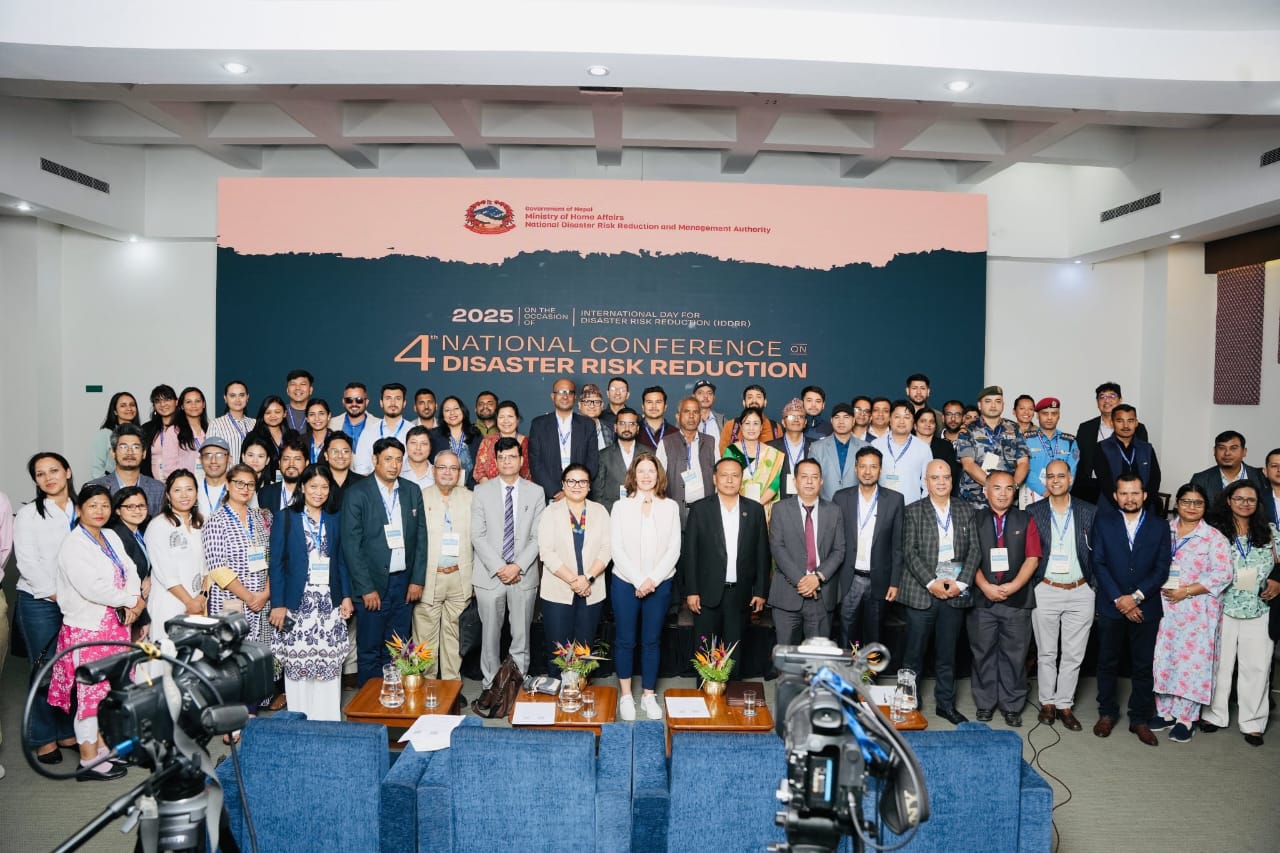

LALITPUR: The Fourth National Conference on Disaster Risk Reduction (NCDRR 2025) concluded at the International Centre for Integrated Mountain Development (ICIMOD), reaffirming Nepal’s commitment to strengthen disaster resilience under the global theme of the International Day for Disaster Risk Reduction (IDDRR) 2025 — “Fund Resilience, Not Disasters.”
Organized by the National Disaster Risk Reduction and Management Authority (NDRRMA) under the Ministry of Home Affairs, in collaboration with ICIMOD, DPNet Nepal, and partners including Australian Aid, the two-day conference brought together government officials, policymakers, scientists, civil society, and community leaders from across Nepal and beyond.
Home Minister Om Prakash Aryal inaugurated the event, while Energy, Water Resources and Irrigation Minister Kulman Ghising delivered the closing remarks.
Both underscored the need to integrate disaster risk reduction (DRR) into Nepal’s national development agenda and shift focus from reactive recovery to proactive resilience building.
The sessions were chaired by NDRRMA Chief Executive Er. Dinesh Prasad Bhatt and facilitated by DPNet Chairperson Dr. Raju Thapa.
The conference reviewed Nepal’s progress under the Sendai Framework (2015–2030) and the National DRR Strategic Action Plan (2018–2030), highlighting inclusive, evidence-based, and technology-driven approaches to risk reduction.
Participants emphasized stronger collaboration between academia, the private sector, and media — urging universities to produce actionable research, businesses to invest in prevention and preparedness, and journalists to promote credible, multilingual communication during crises.
Experts called for modernized rebuilding practices and updated building codes to incorporate multi-hazard risks such as floods, fires, and climate impacts.
They also stressed the need to safeguard cultural heritage, promote civic education, and expand insurance and risk transfer mechanisms to ensure safer recovery.
Indigenous knowledge and local resources were recognized as vital components of Nepal’s DRR ecosystem, with the “Grandma’s Wisdom” approach reminding participants of the enduring value of traditional coping strategies.
Impact-Based Forecasting (IBF) and Anticipatory Action also gained traction, with calls to strengthen observation networks and link early warnings with financial triggers for timely action.
Discussions further focused on institutionalizing resilience through DRR integration in planning and budgeting, strengthening local governments, and ensuring disaster-sensitive environmental assessments.
Gender equality, disability inclusion, and mountain ecosystem resilience were treated as cross-cutting priorities. Participants advocated measurable GEDSI indicators, transboundary mountain cooperation, and the use of AI, drones, and citizen science in hazard forecasting.
Over two dozen thematic and ignite-stage sessions showcased local innovations and lessons from the 2024 monsoon response.
Stakeholders agreed that sustainable resilience requires multi-sector coordination, inclusive governance, and steady financing for prevention and preparedness.
Throughout the conference, the message was consistent — resilience funding is an investment in Nepal’s sustainable future. As one of the most disaster-prone mountain nations, Nepal’s path forward lies in science-based policies, anticipatory governance, and community-led action.
The outcomes from NCDRR 2025 will inform the upcoming National Disaster Report, serving as a roadmap for translating policy into practice.
The event concluded with a shared vision that a safer, resilient Nepal depends on every sector and citizen taking ownership in reducing risk and protecting the nation’s future.